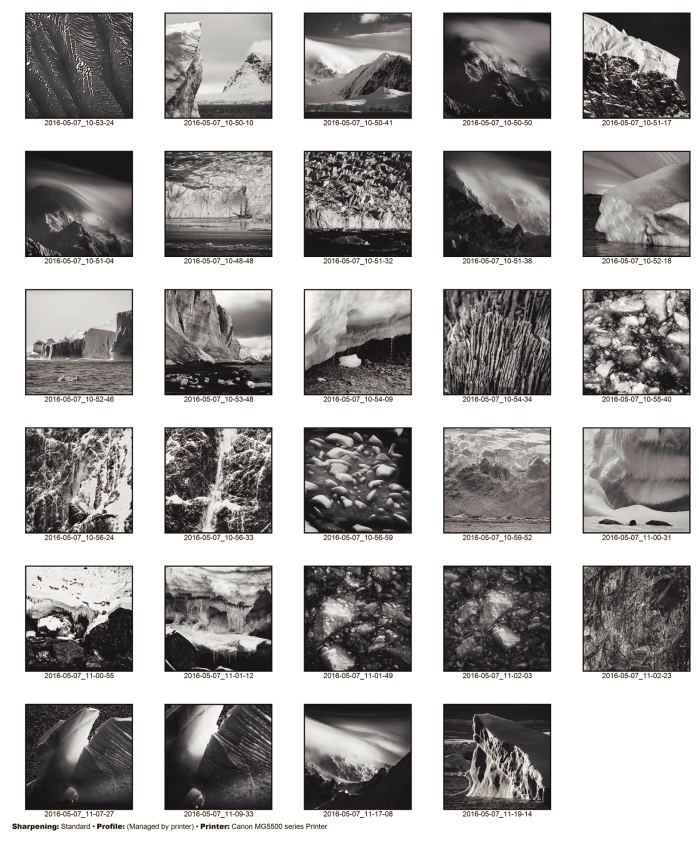
- This is the Contact Sheet for this Assignment.
Introduction to the subject.
“When you photograph people in color, you photograph their clothes. But when you photograph people in Black and white, you photograph their souls!” ― Ted Grant (1).
This quote is about people but fits just as well to Antarctica. Black and White shots bare the Soul of the place allowing it to tell its own story.
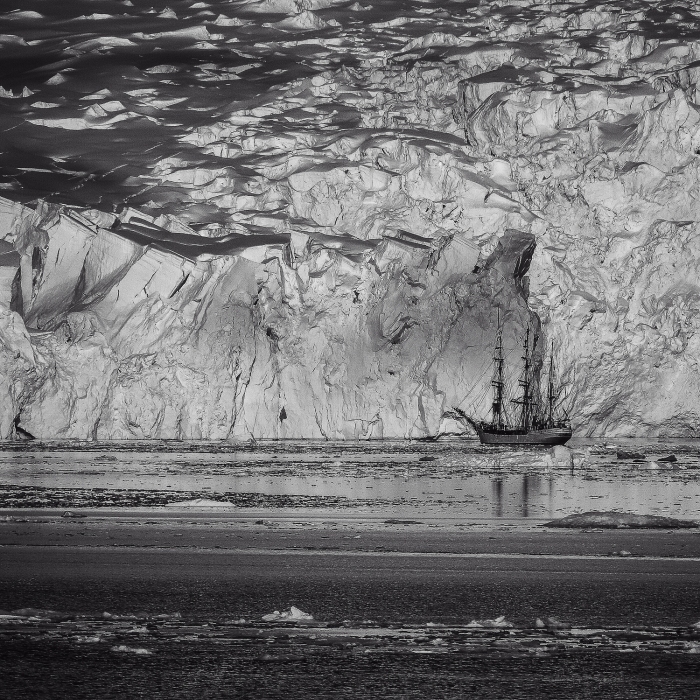
The Scale only has meaning When a manmade object is visible.
I have recently had the opportunity to travel to Antarctica. My original was to capture just the scale of the place. I started by taking shots of the landscape the scale was too big. However if you looked the beauty was in the minutiae in the landscape, the weather and how it has carved this very beautiful place over millennia. Whilst shooting I noticed the amount of water running off the landscape so had conversations with the expedition leader. “We (people) are causing this in our day to day living”. Andrew said matter of factly.
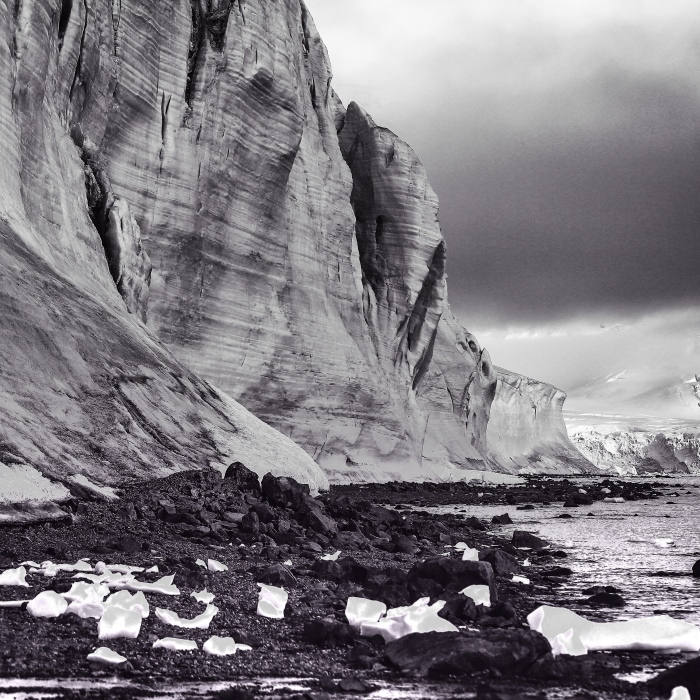
The closer you get the more the detail stands out.
He stated “Antarctica is melting”. This is such a profound thing it had to be my main message. In my first book I included a shot of a lightbulb with the message “turn the lights off”. I sent a PDF of this to my tutor who thought this didn’t fit the other shots and would I consider changing it.
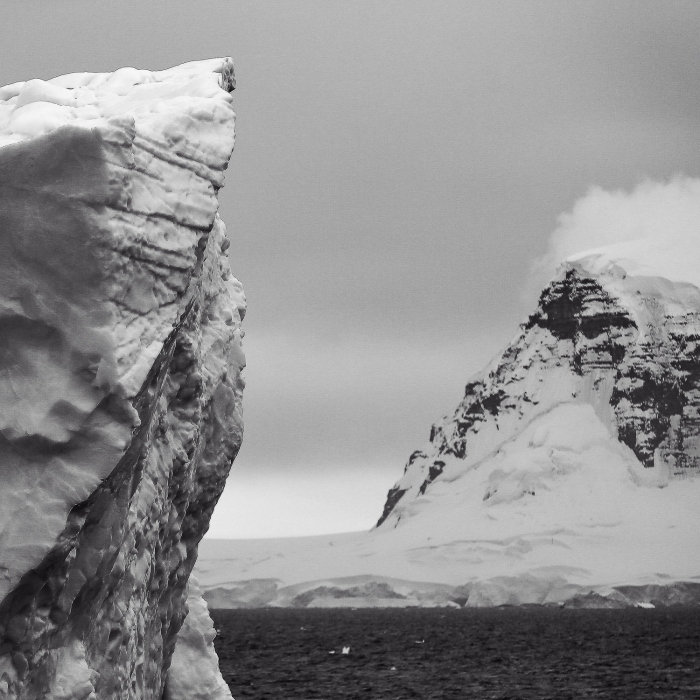
Rock and Ice Mirror one another.
The more I thought about it the more I agreed with the observation. I found myself thinking how presumptuous of me to tell others what to do. The message that Antarctica is melting is strong enough. Then the viewer needs to decide if they are bothered and what they will do about it.
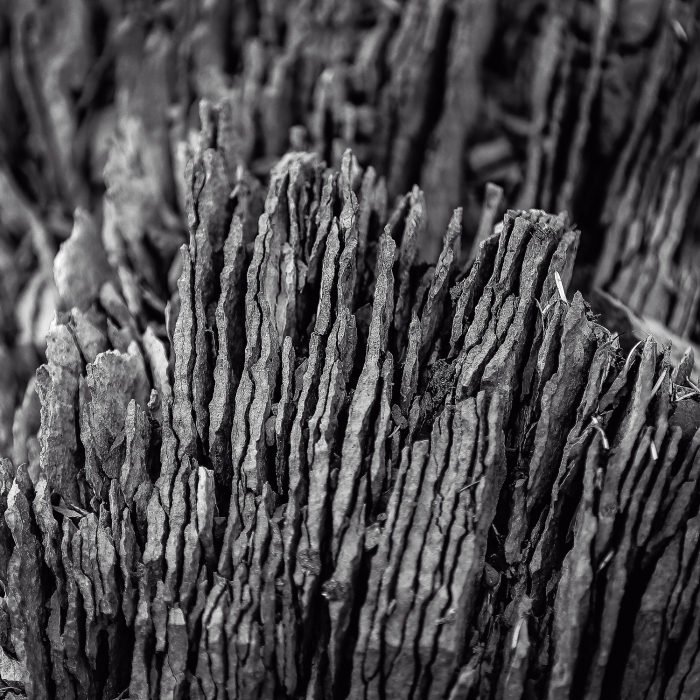
Weather and time splits rock into beautiful patterns.
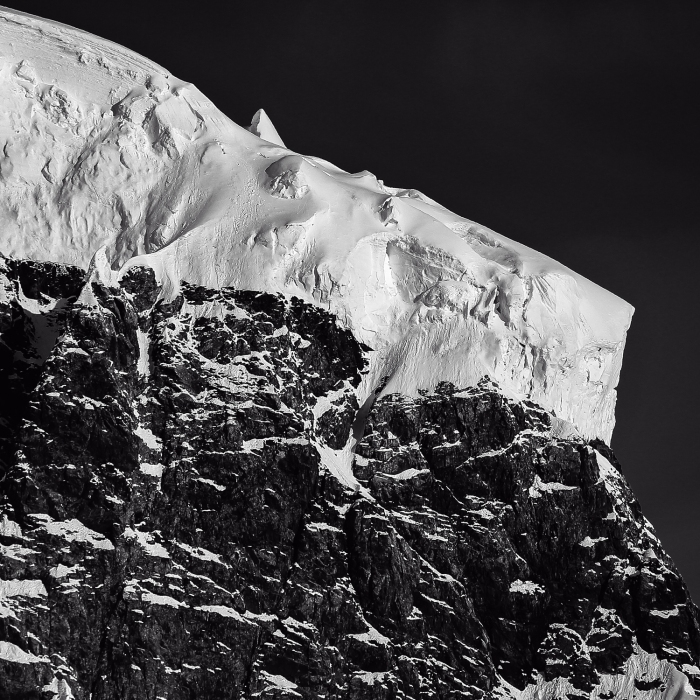
The ice is blown into cracks in the rock.
A description of the aperture, focal length, viewpoint you’ve used and they have affect your images
The light was difficult either too bright with reflection from the ice or not enough light when overcast. Add this to being on a boat getting shots proved difficult. I used a Canon 5d iii and a Canon 70-200mm f2.8 lens. I looked at the landscape and it looked black and white in the main so the landscape dictated black and white. I liked the way 1:1 forced the composition making the viewer wonder what was outside the frame. Long exposures were impossible on most sessions as they were taken from a boat/ship at sea. Aperture was mainly f2.8 and 5.6 but on bright days I got down to f16. This allowed lots of detail to be captured.
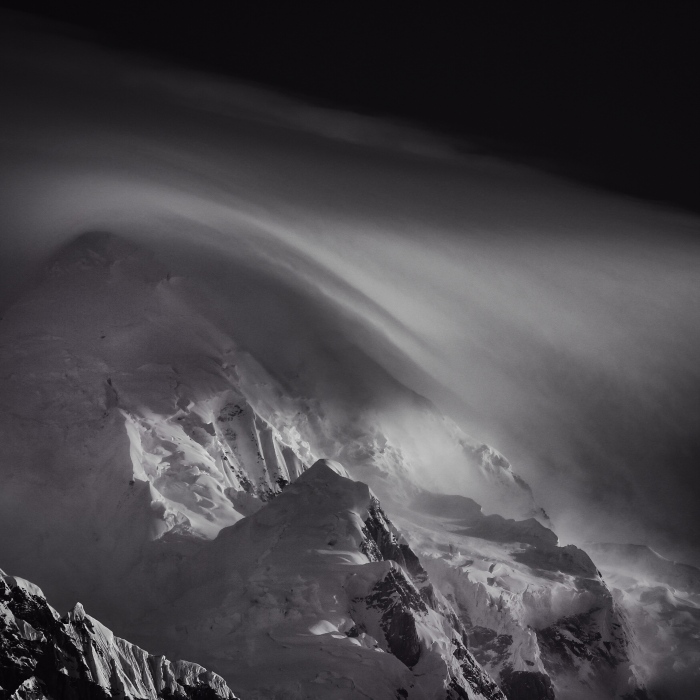
Wearing the rock into gentle curves.
Review the technical aspects of the shoot.
Once I had decided on the type of project it was easy to plan a list of scenes. I had to hope to be lucky to get some pictures of the weather shaping Antarctica.
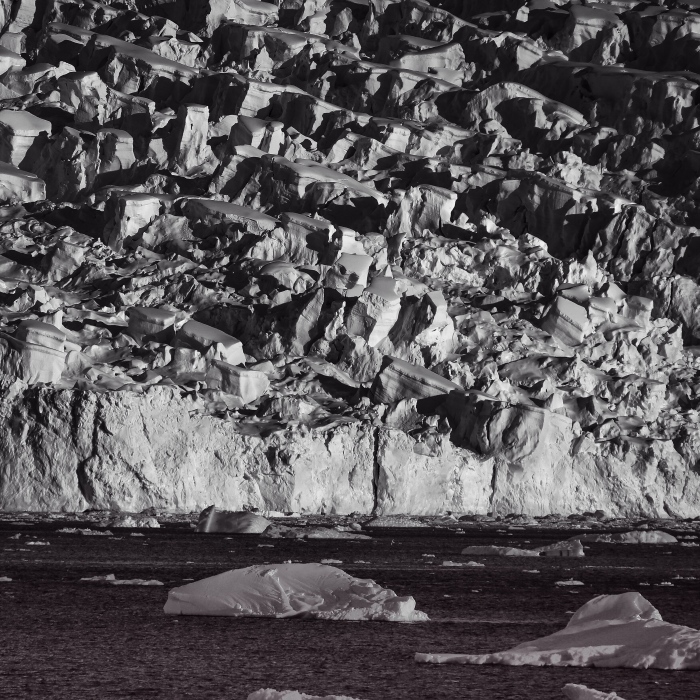
Or cascades over the rock scarring it.
To give a sense of scale I shot from level or below the subject so the viewer feels what it was like to see the place. The camera had to be ready at all times so came on the Zodiac (small inflatable boat) in an overboard bag.
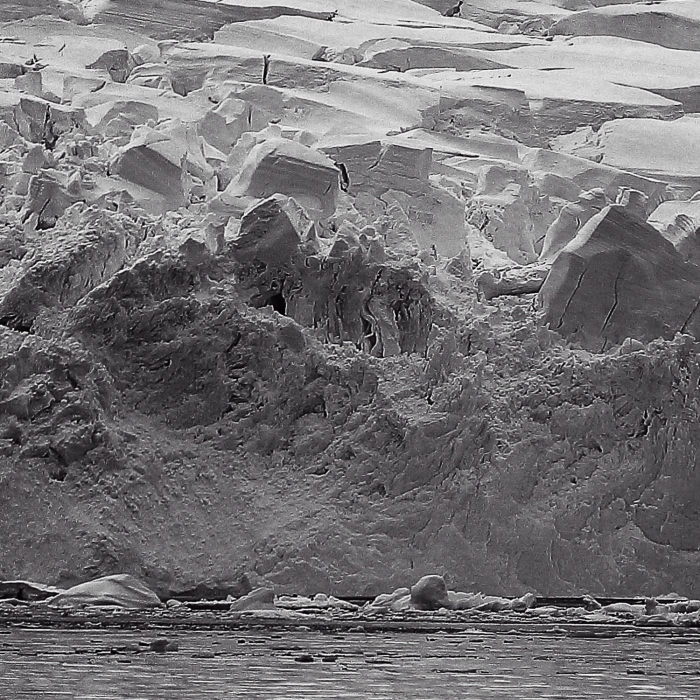
Then it snaps into huge chunks.
Cold was a major factor the average was -6 C so batteries discharged quickly. Keeping batteries as near to my body in the warmth helped extend battery duration. Condensation was also problematic. I tried to let my equipment become cold and then stay cold to minimise condensation forming and spoiling shots or worse destroying equipment.
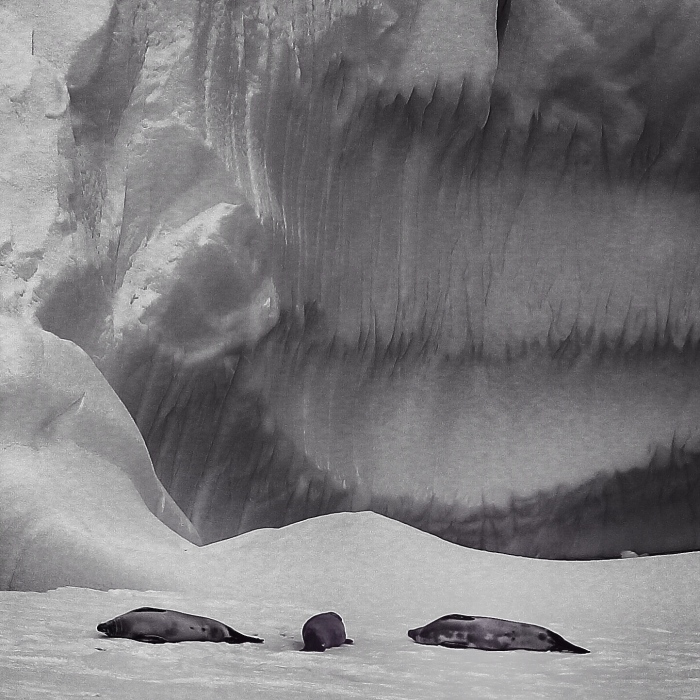
That dwarf all who live there.
Changing battery or lens was also tricky in the windy conditions, so windy that it picked up sizeable pebbles and hurled them around. So it would be easy to have dust enter the body of the camera and damage the sensor. I changed lens as little as possible and did so inside the open overboard bag. The front of the lens was protected by a clear glass filter.

Avalanches sculpt the rock.
I felt the planning through reading and listening to briefings went well. However I had no idea of what to expect until I arrived. Having the end message in mind made it easier to get shots even on the go.
Stabilizing the camera to use smaller apertures would have been good. I could have used a bean bag on land and a gimbal on ship. This would have allowed more detail to be captured. In some rocky places tripods are not allowed as they can mark the rock.
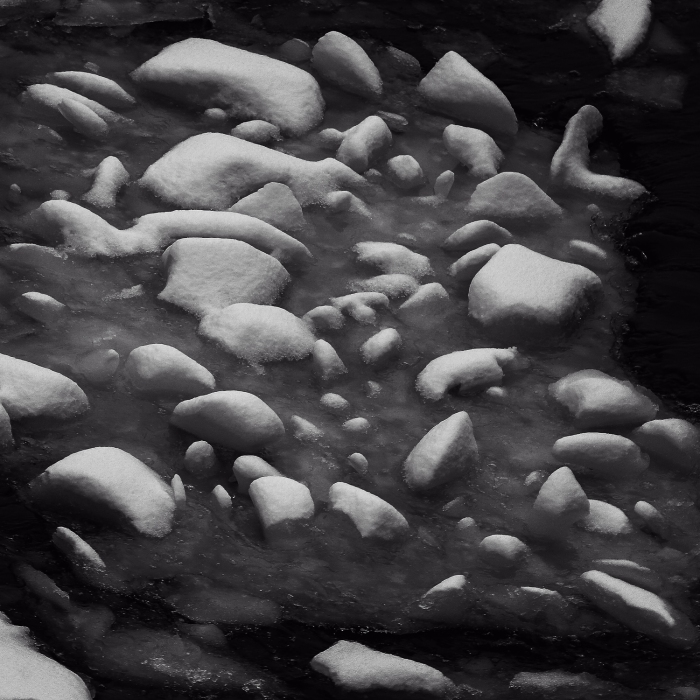
Even the sea freezes.
I went once to each place so shot what I saw. If I was to go again I would have a better idea what to capture. So to improve my work it must be good to go to the location to think and plan before acting. This must improve the results you get.
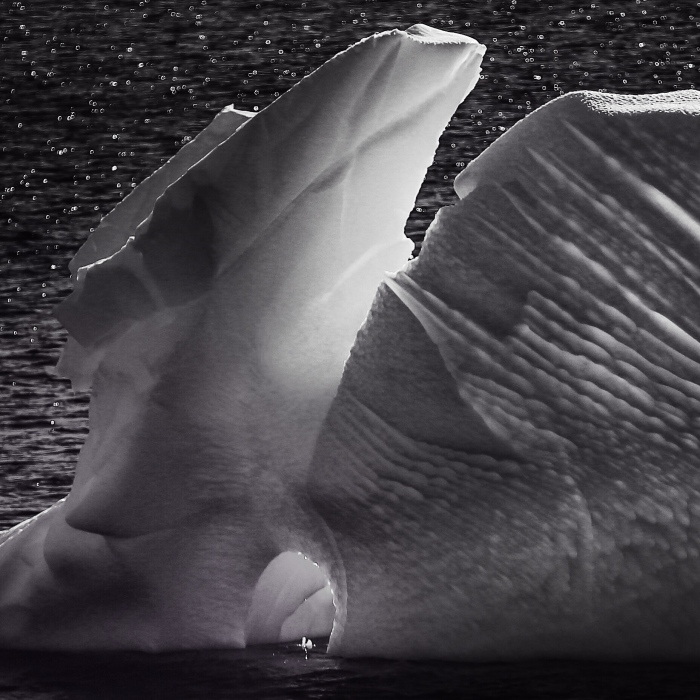
Beauty is everywhere but if you look at the detail you will see…..
On my return I saw Paul Strands exhibition at the Victoria and Albert Museum in London.(3) He had a journal of field visits for each of his photo sets. This would have worked well here allowing extra thought about composure etc. The detail he worked out prior to the shot was astounding including sketches of the locations and shots.
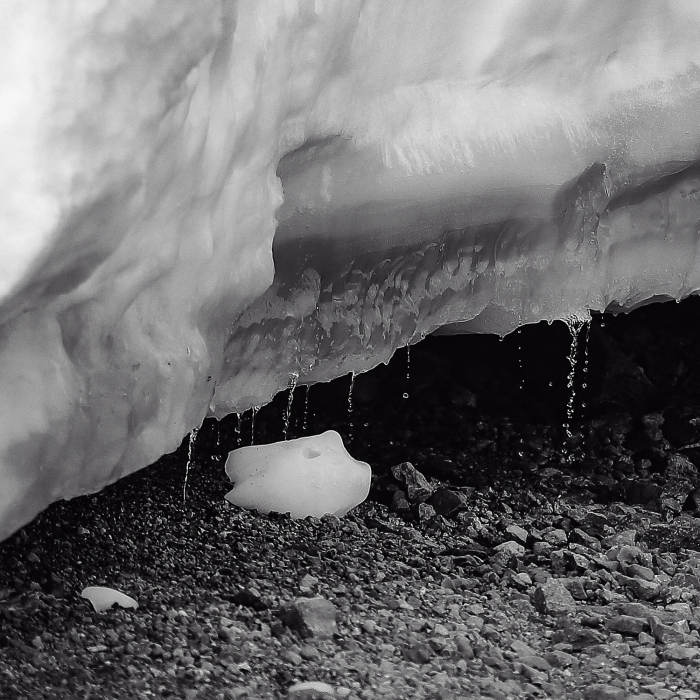
- Antarctica is melting!
Below is the book Rock and Ice I have produced to complement the assignment. Please have a look at the book and give some honest feedback I would love to hear your views. Click the title in blue below to see the book.
References
(1) Grant, T. (2016). Goodreads. [online] Goodreads.com. Available at: https://www.goodreads.com/author/show/411708.Ted_Grant.
(2) Barberie, P. (2014). Paul Strand. Photography and film for the twentieth century. New Haven: Yale University Press.
(3) Paul Strand at the Victoria &Albert Museum, London. (2016).



















A wonderful set, Michael. They really make me want to visit Antarctica. Please share with the OCA Level 1 Photography group if you feel able. I’m sure the others would like to see it.
LikeLike
Can ebook or PDFs be shared? I did this assignment as a photo book but can’t seem to share.
LikeLike
Yes they can. I haven’t done it for a while, but you probably need to attach it as a file.
LikeLike
I will try again thanks Holly.
LikeLike
Best series of images I have seen on this exercise.
Great work Michael. You have produced excellent work given the very challenging conditions I think.
LikeLiked by 1 person
Really enjoyed looking at these photos – spectacular landscape, captured with great black and white tones. Some comments on the layout/blog, which are probably more helpful than just telling you how much I like the photos – not being close to the assignment brief, I couldn’t understand what it was from the blog post (maybe include as a brief intro for context); I’m not sure that the extensive use of capitals is a good idea – makes it quite hard word to read somehow (perhaps because of the amount of page-space). Not related to the assignment, but the menu on your blog doesn’t seem to work; goes back to the OCA template pages? If you’ve not noticed this, I think important to fix as the assessors seem to rely upon straightforward navigation.
Finally, we’re almost neighbours – I live near Skipton. I’ll give you a shout next time I go into the Bradford Galleries (Rock against racism retrospective in the Impressions Gallery looks worth a visit) and perhaps we can meet up for a coffee or beer.
LikeLiked by 1 person
Hi Fitz sorry for long time replying I have been away to the Solomons. Thank you for your valued feedback it was all relevant. The capitals were a mystery as on WordPress they were in upper and lower case. I have retyped and hope it now looks better. I have reworked a couple of the darker images for screen. And the menus now take you to the right place. Indeed we are neighbors and it would be great to meet up whenever you like. Thanks once again.
LikeLiked by 1 person
Pingback: Assignment 2 Rock and Ice – michaelgreenoca